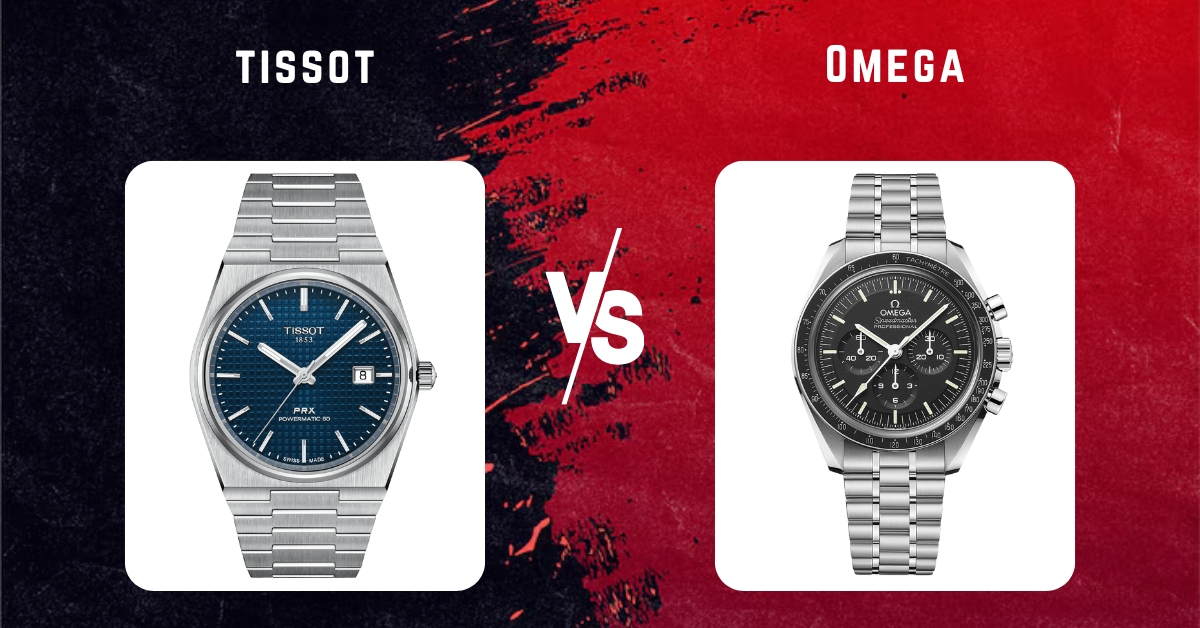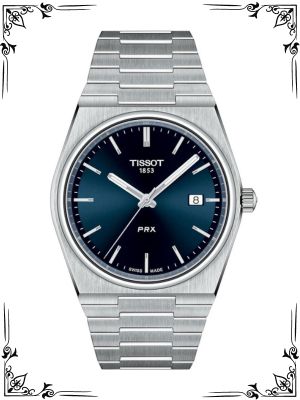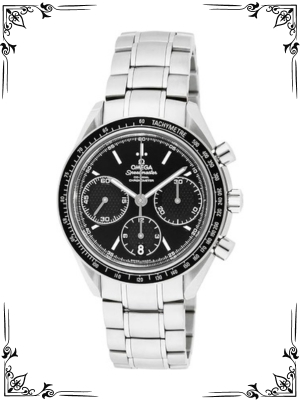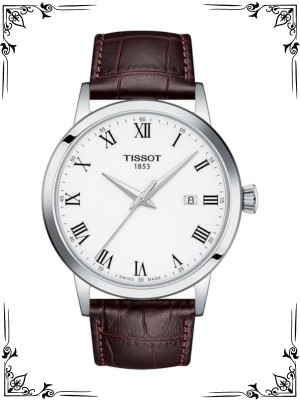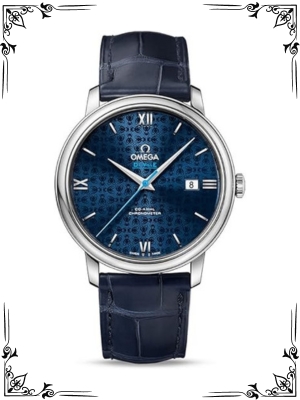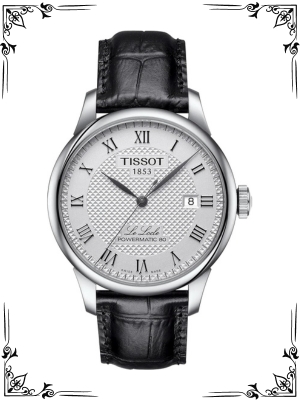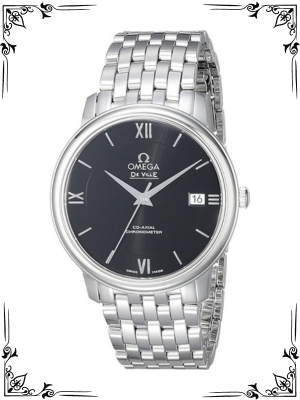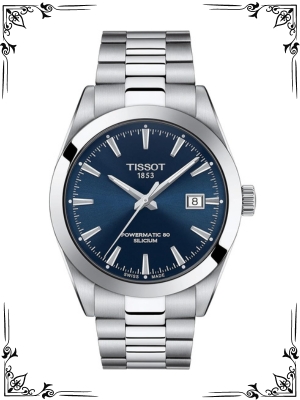The world of luxury timepieces boasts a dazzling array of brands, each vying for the coveted position on your wrist. Two Swiss giants, Tissot and Omega, frequently come face-to-face in this battle for watch supremacy.
Both possess rich histories, exceptional craftsmanship, and a dedication to innovation. But for the discerning watch enthusiast, the question arises: Tissot or Omega?
This comprehensive guide delves into the intricate details of both brands, empowering you to make an informed decision that aligns perfectly with your budget, lifestyle, and watch preferences.
Brand Legacy
Tissot: Founded in 1853 by Charles-Félicien Tissot and his son Charles-Émile in Le Locle, Switzerland, Tissot boasts a legacy of over 160 years. They established themselves as pioneers in mass-producing high-quality pocket watches, making luxury accessible to a wider audience.
Tissot’s commitment to innovation is evident in its numerous achievements, including the world’s first commercially successful pocket watch with a central second hand in 1894 and the groundbreaking Tissot Antimagnétique, a watch resistant to magnetism in 1930.
Today, Tissot remains a leader in the mid-range luxury watch market, renowned for their reliable timepieces that combine classic design with modern technology.
Omega: Established in 1848 by Louis Brandt in La Chaux-de-Fonds, Switzerland, Omega has a rich history marked by groundbreaking achievements. Early on, they built a reputation for precision by winning numerous accuracy competitions.
Omega’s legacy is forever intertwined with space exploration, as their Speedmaster Professional became the first watch worn on the moon during the Apollo 11 mission in 1969. Beyond space, Omega has also served as the official timekeeper for the Olympic Games since 1932.
Today, Omega occupies a prominent position in the luxury watch market, revered for its sophisticated designs, cutting-edge technology, and prestigious brand heritage.
Price Point
When considering Tissot vs. Omega, price is a significant factor. Here’s a general breakdown:
Tissot: Occupies the mid-range luxury watch segment. Their timepieces typically range from $300 to $1,500, making them a more accessible option for those seeking a taste of Swiss luxury.
Omega: Resides in the upper-end luxury watch market. Their price range starts around $3,000 and can soar well above $20,000 for complex models with precious metals and advanced complications.
Table 1: Price Range Comparison
| Brand | Price Range |
|---|---|
| Tissot | $300 – $1,500 |
| Omega | $3,000+ |
Choosing Based on Price:
- Value-conscious: Tissot offers excellent quality and timeless design at a more affordable price point.
- Investment potential: Certain Omega models, particularly those with historical significance like the Speedmaster, can hold their value or even appreciate over time. However, approaching luxury watches solely as investments is not recommended.
Movement
Tissot: Employs a blend of reliable Swiss quartz movements and automatic mechanical movements depending on the model. Their quartz movements offer exceptional accuracy and require minimal maintenance, making them ideal for everyday wear.
The automatic movements showcase the intricate beauty of mechanical watchmaking but require periodic servicing.
While some Tissot models utilize movements sourced from ETA, a renowned Swiss movement manufacturer, others incorporate their own Powermatic 80 calibers, known for their extended power reserve of approximately 80 hours.
Omega: Predominantly utilizes in-house Master Chronometer calibers, a testament to their commitment to advanced watchmaking technology. These movements undergo rigorous testing to ensure exceptional precision, magnetic resistance, and performance. Some Omega models might still incorporate ETA movements, particularly in older pieces.
Table 2: Movement Comparison
| Brand | Movement |
|---|---|
| Tissot | Swiss quartz & automatic (ETA or Powermatic 80) |
| Omega | Primarily in-house Master Chronometer calibers (some ETA in older models) |
Choosing Based on Movement:
- Convenience and accuracy: Tissot’s quartz movements are a perfect choice for those seeking a hassle-free timepiece.
- Mechanical marvel: For watch enthusiasts who appreciate the intricate workings of a mechanical movement, Omega’s in-house calibers or Tissot’s automatic options offer a captivating experience.
- Precision: Omega’s Master Chronometer certification guarantees superior accuracy.
Materials and Construction
The materials and construction of a watch significantly impact its aesthetics, durability, and value. Here’s a breakdown of Tissot vs. Omega in this crucial aspect:
Tissot:
- Primarily utilizes high-quality 316L stainless steel for the case material, offering a classic and versatile look.
- Some models might incorporate PVD (Physical Vapor Deposition) coatings for a touch of color or increased scratch resistance.
- Sapphire crystal, renowned for its exceptional scratch resistance, protects the dial.
- Leather straps are a popular choice, offering a timeless and comfortable feel. Some models might include bracelets made from stainless steel or other materials, catering to various preferences.
Omega:
- Employs a wider range of materials, including high-grade 316L stainless steel, lightweight titanium, and luxurious 18k gold for both the case and bracelet. This diversity caters to a broader spectrum of styles and budgets.
- Ceramic bezels are often incorporated into certain models, particularly diving watches, offering exceptional scratch resistance and a sleek aesthetic.
- Sapphire crystals are standard, ensuring optimal clarity and scratch protection.
- A wider variety of straps and bracelets are available, including alligator leather, rubber, and sporty NATO straps, allowing for ultimate personalization.
Table 3: Material and Construction Comparison
| Brand | Case Material | Bezel | Crystal | Strap/Bracelet Options |
|---|---|---|---|---|
| Tissot | Primarily Stainless Steel (sometimes PVD coated) | Sapphire Crystal | Sapphire Crystal | Leather, Stainless Steel, Other Materials |
| Omega | Stainless Steel, Titanium, 18k Gold | Stainless Steel, Ceramic (on specific models) | Sapphire Crystal | Leather, Alligator Leather, Rubber, NATO Straps, Stainless Steel Bracelets |
Choosing Based on Materials and Construction:
- Durability and affordability: Tissot’s stainless steel construction offers excellent value and robustness for everyday wear.
- Luxury and variety: Omega’s use of precious metals, ceramic bezels, and a wider range of strap options caters to those seeking a more luxurious and personalized timepiece.
- Specific needs: For diving watches, Omega’s ceramic bezels might be a preferred choice due to their enhanced scratch resistance.
Design and Aesthetics
Both Tissot and Omega boast distinct design philosophies:
Tissot:
- Embraces a classic and timeless aesthetic with clean lines and a focus on functionality.
- Their designs often incorporate vintage influences with a modern twist.
- A wide variety of styles are offered, catering to both men and women, from elegant dress watches to sporty chronographs.
Omega:
- Known for their sophisticated and sometimes bold designs, often incorporating iconic elements from their rich history.
- The Speedmaster Professional, with its distinctive black tachymeter bezel and chronograph layout, exemplifies this approach.
- Seamaster models showcase a focus on diving functionality with robust construction and water resistance.
- Omega offers a wider range of high-end complications, like perpetual calendars and tourbillons, for discerning watch collectors.
Choosing Based on Design:
- Classic elegance: Tissot’s timeless designs are perfect for those who appreciate a watch that transcends trends.
- Bold statements: Omega caters to those who seek a watch with a distinct personality and heritage.
- Functionality: Consider the specific features you desire, such as a chronograph or a diving bezel, when selecting a design.
Brand Image and Prestige
Owning a watch is not just about telling time; it’s a statement about your taste and appreciation for quality. Here’s how Tissot and Omega differ in terms of brand image:
Tissot:
- Represents accessibility to Swiss watchmaking excellence.
- Owning a Tissot signifies an appreciation for quality and timeless design without a hefty price tag.
- A popular choice for young professionals or those entering the world of luxury watches.
Omega:
- Carries the weight of a prestigious legacy in space exploration, sports timing, and Hollywood.
- Owning an Omega signifies an investment in a piece of history and a symbol of luxury.
- A coveted brand among watch enthusiasts and those seeking a timepiece that commands respect.
Choosing Based on Brand Image:
- Value-conscious with a desire for quality: Tissot offers an excellent entry point into the world of Swiss watches.
- Aspiring to own a piece of history: Omega’s brand legacy and association with iconic moments might be a significant factor in your decision.
Popular Models From Tissot and Omega
Tissot
Tissot Seastar 1000 Powermatic 80: This sporty automatic watch is great for everyday wear and even light diving. It features a stylish stainless steel case, a water resistance of up to 300 meters, and a Powermatic 80 movement that provides a long power reserve of up to 80 hours.
Tissot PRX: A modern take on a classic design, the PRX features a stainless steel case with an integrated bracelet, a variety of dial colors, and a Powermatic 80 movement for reliable timekeeping.
Tissot T-Classic Dream: This elegant dress watch comes in a variety of styles with quartz or automatic movements. It’s a great option for those looking for a sophisticated timepiece for formal occasions.
Tissot T-Touch: A feature-packed touchscreen watch, the T-Touch offers a variety of functions beyond telling time, including a compass, barometer, and altimeter. It’s a great option for outdoor enthusiasts or those who like a watch with a lot of technology.
Tissot Carson: A timeless and sophisticated watch, the Carson features a classic design with a variety of dial colors and strap options. It’s a versatile watch that can be dressed up or down.
Omega
Omega Speedmaster Moonwatch: One of the most iconic watches in history, the Speedmaster Moonwatch is the watch that was worn by Buzz Aldrin on the moon landing. It features a chronograph movement, a tachymeter bezel, and a black dial with luminous hands and indexes.
Omega Seamaster Diver 300M: A sporty and stylish dive watch, the Seamaster Diver 300M is water resistant to 300 meters and features a helium escape valve for professional divers. It comes in a variety of styles with different case materials, dials, and straps.
Omega Constellation: A luxurious and elegant watch, the Constellation is known for its iconic observatory medallion on the side of the case. It comes in a variety of styles with different case materials, dials, and straps.
Omega De Ville Prestige: A classic dress watch, the De Ville Prestige is known for its slim profile and elegant design. It comes in a variety of styles with different case materials, dials, and straps.
Omega Speedmaster Racing: A sporty and stylish chronograph watch, the Speedmaster Racing is inspired by Omega’s racing heritage. It features a chronograph movement, a tachymeter bezel, and a variety of dial colors and strap options.
In general, Tissot watches are considered to be more affordable than Omega watches. Tissot offers a wide range of styles to suit different tastes, while Omega is known for its luxury watches and iconic designs.
User Feedback
Here’s a glimpse into what real-world users appreciate and critique about each brand:
Tissot:
- Praised for:
- Affordable price point: A great way to experience Swiss watchmaking without breaking the bank.
- Classic and versatile designs: Timeless aesthetics that complement various styles.
- Reliable movements: Both quartz and automatic options offer accuracy and minimal maintenance (for quartz) or the satisfaction of a mechanical marvel (for automatic).
- Wide range of styles: From dress watches to sporty chronographs, there’s a Tissot for every taste.
- Criticized for:
- Limited use of high-end materials: Primarily uses stainless steel, with fewer options for precious metals or ceramics compared to Omega.
- Simpler functionality: Less focus on high-end complications compared to Omega.
Omega:
- Appreciated for:
- In-house Master Chronometer movements: Exceptional precision and performance guaranteed by rigorous testing.
- Wider variety of materials: Luxury options like 18k gold and ceramic bezels elevate the aesthetics and value.
- Iconic and bold designs: The Speedmaster and Seamaster collections offer a distinct personality and rich heritage.
- High-end complications: Perpetual calendars, tourbillons, and other complex functions cater to discerning collectors.
- Common critiques:
- Higher price point: A significant investment compared to Tissot.
- Servicing costs: Maintaining Omega’s complex movements can be expensive.
- Not for everyone’s taste: The bolder designs might not resonate with everyone’s preferences.
Common Considerations
Before making your final decision, consider these additional factors:
Your lifestyle: A sporty chronograph from Tissot might be ideal for an active individual, while a dress watch from Omega might suit a formal environment.
Wrist size: The case size of the watch should complement your wrist size for optimal comfort and aesthetics. Try on both Tissot and Omega models to assess which feels better on your wrist.
Personal style: Do you prefer a classic and understated look or a bolder statement piece? Choose a watch that aligns with your overall style and personality.
Investment potential: While not the primary reason to buy a watch, some Omega models, particularly those with historical significance, can hold their value or even appreciate over time.
Choosing Your Champion
Ultimately, the decision between Tissot and Omega boils down to your priorities and budget. Here’s a quick recap to guide your choice:
The Value-Conscious Choice: Tissot
- Offers exceptional quality and timeless design at a more accessible price point.
- Reliable quartz or automatic movements ensure accuracy and minimal maintenance (for quartz).
- Classic and versatile designs complement various styles.
The Prestige Seeker: Omega
- Represents a prestigious legacy in watchmaking history.
- In-house Master Chronometer movements guarantee exceptional precision and performance.
- A wide variety of materials and high-end complications cater to discerning watch enthusiasts.
- Bolder and iconic designs make a statement.
Remember: There’s no single “correct” answer. The best choice is the watch that resonates most with you, complements your lifestyle, and brings you joy every time you wear it.
FAQs
1. Is a Tissot a good watch?
Absolutely! Tissot offers exceptional quality, reliable movements, and timeless designs at an attractive price point. They are a great entry point into the world of Swiss watches.
2. Which brand is more durable, Tissot or Omega?
Both Tissot and Omega use high-quality materials, making them very durable watches. However, Omega’s wider use of scratch-resistant materials like ceramic bezels might offer a slight edge in specific situations.
3. Is it worth buying a pre-owned Omega?
Yes, purchasing a pre-owned Omega from a reputable seller can be a great way to acquire a luxury watch at a more affordable price. However, conduct thorough research to ensure authenticity and condition.
4. Where can I buy a Tissot or Omega watch?
Authorized retailers are the safest option for purchasing a genuine Tissot or Omega watch. You can also find pre-owned models from reputable online sellers or watch forums.
5. How do I take care of my Tissot or Omega watch?
Regularly clean your watch with a soft cloth and avoid harsh chemicals. Depending on the model, you might need to replace the battery (quartz) or have the movement serviced (automatic) periodically. Always consult the manufacturer’s instructions for proper care.

